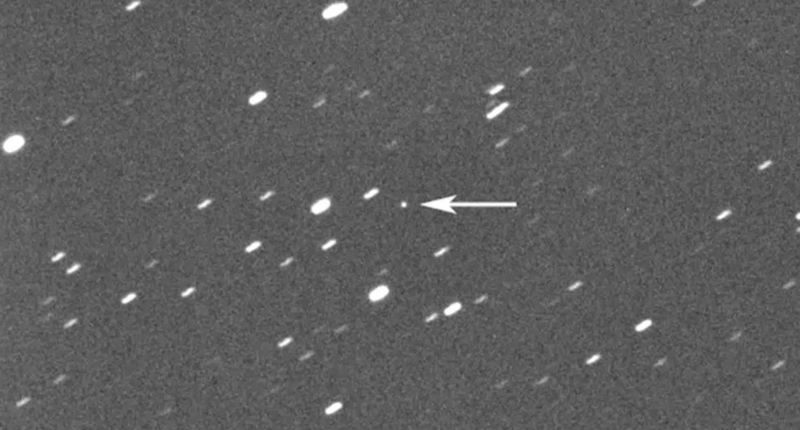An asteroid, 2023 DZ2, will soon pass between the Moon and Earth, offering astronomers the chance to study it up close. The asteroid, estimated to be between 130 and 300 feet in size, will be visible through binoculars and small telescopes, making it a rare opportunity to study a space rock of this size. The asteroid won’t return until 2026, and while it poses no threat to Earth, it will give scientists the opportunity to practice planetary defense for future potentially dangerous asteroids. The asteroid’s close approach also provides a great opportunity for observations, which astronomers are eagerly anticipating. The event will be broadcast live by the Virtual Telescope Project, and scientists hope to gather as much information as possible on this once-in-a-decade flyby.
A Large Asteroid Set to Graze Past the Moon and Miss Earth
On March 26th, 2023, an asteroid named 2023 DZ2 will pass between Earth and the Moon’s orbit, offering astronomers a chance to observe a space rock from over 100,000 miles (168,000 kilometers) away. The asteroid is estimated to be between 130 feet and 300 feet (40 meters and 90 meters) in size and will come as close as 320,000 miles (515,000 kilometers) to the moon. Although rare, such flybys of this size of asteroid do occur about once every decade.
The asteroid was discovered a month ago, and several hours after its close approach to the moon, it will buzz the Indian Ocean at 17,500 mph (28,000 kph). The European Space Agency’s planetary defense chief, Richard Moissl, reassured the public, stating that the “city killer” asteroid posed no threat to Earth. However, he also added that its close approach offers a great opportunity for observations, which astronomers are looking forward to.
The International Asteroid Warning Network considers this an excellent opportunity to practice planetary defense for when a dangerous asteroid is heading our way. The asteroid won’t be back in our direction again until 2026, although there were initial fears that it might hit Earth then. However, scientists have since ruled that out.
NASA confirmed that although asteroid flybys are not unusual, it is rare for one as large as 2023 DZ2 to come so close to Earth. This will be a great chance for astronomers to study the asteroid, as it will be visible through binoculars and small telescopes.
The Virtual Telescope Project will provide a live webcast of the close approach, and astronomers will take this opportunity to make as many observations as possible. Despite the asteroid’s close call with the moon, scientists are grateful that it is missing Earth and is offering an opportunity for studying these massive space rocks.
Don’t miss interesting posts on Famousbio










